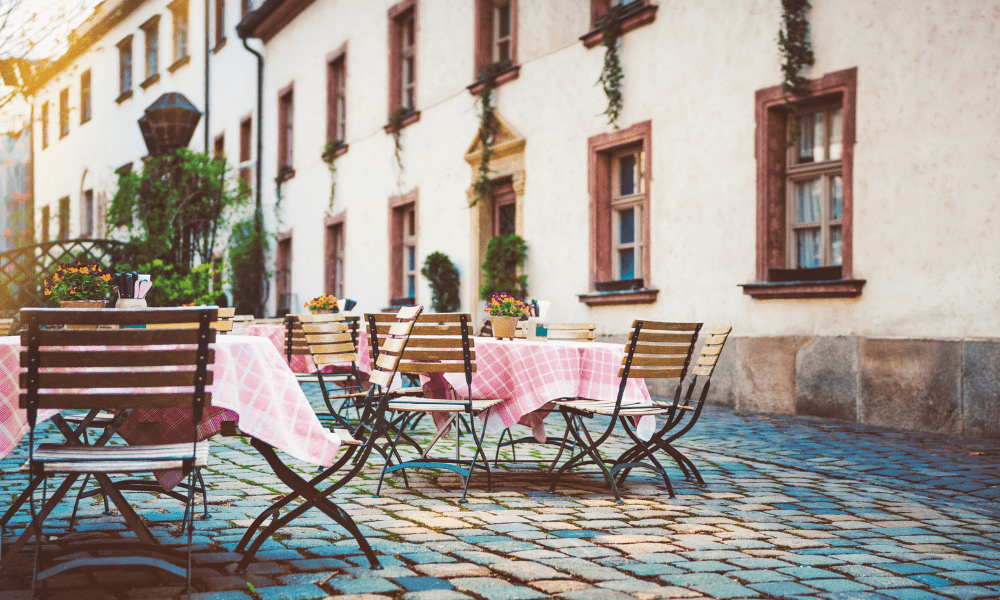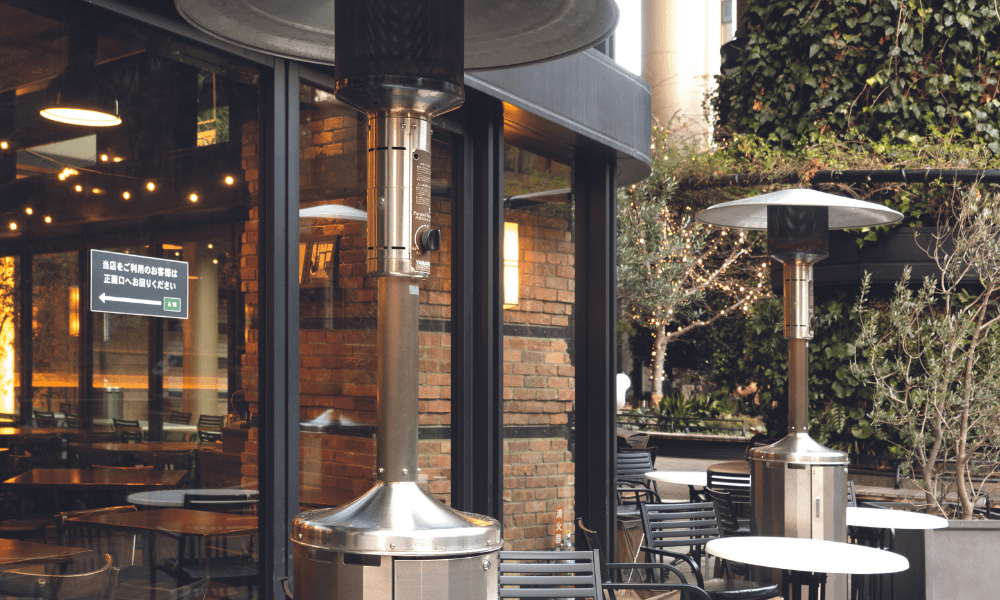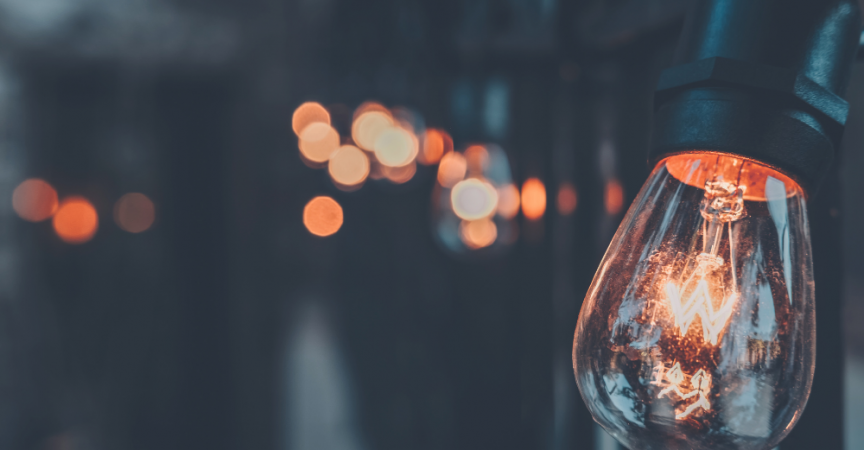Maximizing Patio Profitability in 2021
We can’t recall a patio season that will be more important than the summer of 2021. Patrons have been cooped up for months, enduring seemingly endless waves of the COVID-19 pandemic, while restaurants have continuously pivoted, flipped and remained agile to stay afloat. All to get to this point: when people can safely enjoy some sunshine-soaked food and drinks, and restaurants can have a chance to finally earn some revenue and help recoup a year’s worth of loss. That means restaurants need to flawlessly execute their patios, and we’ve got some valuable tips to help you maximize your profits and start the road to recovery this summer.
The Dollars are in the (Menu) Details
The first thing you think of when you think of restaurants is food, so it makes sense that the first step to a successful patio season is having a menu designed for success. That goes beyond having fun, unique and good quality items; it means having a menu constructed so it sets up your kitchen for success.
David Hopkins, President of The Fifteen Group, says that the biggest thing he is discussing with his clients is efficiency and speed of execution. Patios will be busy, so it’s important to maximize the return on investment from every seat on your patio.
“A lot of people don’t necessarily realize that almost 50 per cent of every incremental dollar that you sell on a patio goes toward your bottom line,” says Hopkins. “If you’ve got an 80-seat patio, and you can turn 40 more people per day just because you’re efficient, that will probably amount to about 100-120k more profit over the course of the summer — not revenue, bottom-line profit.”
Avoid having too many items from the same area of a kitchen to avoid bottlenecks, minimize lengthy cook time items and have some dishes that can be served almost immediately. “If you have people waiting for 40 minutes to get their food, you could say “that’s OK because they’re going to order another drink’, but I’d much rather have a whole other table come through…ordering more food, drinks and everything,” says Hopkins.
Steve Baert, the Director of Operations at Toronto-based Honeycomb Hospitality, echoes Hopkins’ speed sentiment. One of Honeycomb’s venues, Baro is home to one of Toronto’s most popular rooftop patios, and Baert says improving kitchen efficiency can also be done by doing as much pre-service prep work as possible and minimizing transport time from kitchen to table.
“I strongly suggest keeping the food coming from the same floor you’re serving on,” says Baert. “You’ll have a more productive and profitable service, plus your customer and staff retention will be higher.”
As for the actual items, both Baert and Justin Tisdall, owner of BeetBox, Juke Chicken and the Chickadee Room in Vancouver, say to focus on two key areas: fresh and shareable. Baert notes that food with strong flavours, such as fresh-charred BBQ proteins, ceviches, and salads really resonate well with patio guests. Many customers move away from ordering one or two large items in the summer, opting for multiple smaller, tapas-style dishes and maximizing variety.
Tisdall says that guests enjoying drinks out in the sun tend to enjoy foods that are salty, refreshing, and light. “We kind of pattern our food and drink programs in the same manner—nothing is going to be super rich or super heavy,” said Tisdall. “Everything is approachable, refreshing and helps you beat the heat in the best way possible.”
If it Doesn’t Make Dollars, it can Still Make Sense
Instead of the traditional “30 per cent markup” style of setting prices for food items, Hopkins suggests to use margin menu pricing, which is a more strategic and results-driven method to determine how to price your menu. Focus on evalutating your menu items based on the profit they return and their volume of sales. Then, isolate the items that truly shine, instead of a blanket approach to looking at your menu.

Hopkins encourages restaurants to raise their prices anywhere from seven to 15 per cent, but only on those strategically-targeted items. “So many people don’t realize that if you take this approach and do it strategically, you can increase your average margin by 10-15 per cent — and guests won’t even notice it,” says Hopkins.
“You’ve put some prices up by a buck or two, but others have gone down by a buck. If you put an item that you barely sell down by a dollar, it doesn’t really cost you anything… but the value perception on the menu is very noticeable.”
There are other factors to consider when setting menu prices as well. Certain parts of a kitchen line often bottleneck during quick-service periods. Lowering prices during these times on some items from other areas of the kitchen can help increase their sales, alleviate bottlenecks and improve service.
Hopkins also suggests slightly lowering prices on items that pair well with other items. For example, many restaurants will take a lower margin on chicken wings because it draws extra beer sales—an item with a significantly better margin. Hopkins recommends reviewing a new menu after four weeks, and then reviewing your pricing model every three months to help identify menu margin pricing opportunities.
Your People Matter
Food may be important, but a restaurant can’t thrive without good staff representing your brand. The overwhelming sentiment this summer is “the more staff, the better”, to give customers the best possible experience as we welcome them back to our venues for the first time in months. But having more staff doesn’t necessarily equate to better customer service; they need
the right tools for success, starting with proper training.
“You will have a waitlist if you have a great spot, so the biggest problem is managing volume,” says Baert. “You need to be organized, you need to be transparent, and having a wellcoached and diligent support staff and management team that can manage a waitlist is critical.” Baert tries to avoid having his staff work longer than six-hours on a patio, and he also avoids scheduling any of his staff more than three days in a row outside.
“There’s a wear and tear that comes from being in the heat. Restaurants are fast-paced, and there’s an expectation of service that we don’t want to jeopardize,” says Baert. “It’s like a line change in hockey: you have to keep it fresh and energetic and we protect each other.”
A Welcoming Site
Not all patios are created equal, but they all need to be well thought out. Tifany Scifo, the Director of Design & Marketing at Juiceworks, says that the flow of foot traffic is extremely important. With COVID-19 precautions still very real, setting how patrons and the staff circulate, dictating access to shared facilities such as restrooms and the hostess stand, and minimizing face-to-face interactions between guests coming in and out are things that need to be considered.
Scifo notes there’s more emphasis on experience and the feeling that guests have when visiting a space. Restaurants should give them a more immersive and share-worthy experience.
“We have one client who is doing a hybrid live/digital wall, along a pedestrian walkway, which acts as a shared experience for people while they’re waiting at the hostess stand to enter into the space,” says Scifo. “Extra sanitation and cleaning means it takes a little longer to get into places now, so this is a fun way to keep them interested.”

Scifo also says that “pop-up” items—such as bars, visiting guest chefs and pickup service windows—are very trendy. They help guests feel that they’re in a space that’s special and catered to them, and can be reskinned for different scenes, themes and locations. “Another trend we’re noticing is guests having a clear line of sight to food prep,” adds Scifo. “Guests seeing how their food is prepared and the freshness of the ingredients makes them feel like they’re part of the experience.”
The first thing a guest usually sees is the patio, and having a cold, unwelcoming space—or a patio that clashes with your restaurant’s theme—can sour a guest’s experience. Nick Goddard, President of Portage Design Group, notes that it starts by having some connection between the interior and exterior appearance. “For example, a sports pub should take advantage of the context of a sporting event,”says Goddard. “And not look like an Italian rustic village setting.”
There’s always the question of balancing aesthetics with efficiency, and Goddard stresses form before function. “If the layout doesn’t work, the patio will fail,” says Goddard, “but that doesn’t mean a well-planned patio can’t be both beautiful AND efficient.” Scifo reinforces that notion, reminding restaurants that there needs to be a synergy between the two spaces and they need to have the same vibe. But that doesn’t mean you can’t have different furniture or a different design aesthetic in your accessories.
You can also create the finishing touches with lighting. There are simple, effective, ways to light a patio so that it is truly memorable, yet cost-efficient. Tisdall took this approach when designing his 16-seat shared patio for Juke and the Chickadee Room. The space emulates the vibe of the Chickadee Room—80s themes and colours, retro vinyl and plexiglass dividers with neon pink and wood trim.
“In a time when everyone is being extremely serious,” says Tisdall, “we’re doing our best to find some moments of levity.” This summer’s focus should be on creating an atmosphere that makes people feel excited, welcomed, safe and comfortable. “It’s not just throwing tables and chairs and putting people outside — everyone likes being outside, especially after being cooped up for a year,” says Baert. “But what’s super important is making it warm and welcoming and having people feel like ‘I’m here and I feel like this is something special’.”

What Works Best on a Patio?
Choosing your patio materials can make or break your space — but what works best for what type of venues?
• Goddard recommends bright colours for themed restaurants and more subdued greys and blacks for sports pubs.
• Aim for UV-resistant and durable fabrics: it may cost most than standard fabrics but it is essential.
• Soften railings with decorative elements like planters and wood posts for restaurants while traditional pubs and sports bars can use more steel, glass, and brick.
• Scifo notes using neutral furniture allows plenty of flexibility, as you can change the look of your patio (via pillows, plants and accessories) to fit your theme, adjust as the seasons change, or even plan events around specific dates and holidays.
• We’re also seeing restaurants use less boxwoods in spaces, opting instead for more organic-looking plants, different hanging elements and that create an eclectic and unique guest experience.
Redefining a Patio
Some patios are rooftops, some are sidewalks, some are even parking lots. Patios can be created from many different creative spaces. Iori Kataoka, co-owner of Yuwa Japanese Cuisine in Vancouver, turned the beautiful brick parking lot in front of her restaurant into a patio at the onset of the pandemic in 2020. This added 16 seats to Yuwa’s 28-seat dining room, setting the bar for temporary patios. “We were lucky that our parking lot was set in off the street a little bit, so it feels more connected with our dining room,” says Kataoka. “We really took advantage of the greenery that was already around us and it looked like it was always a patio — so much that first-time visitors ask if this was always here and regulars said it’s one of the best temporary patios they’ve ever seen!”
While Yuwa did a great job of pivoting on the fly, many restaurants don’t have the luxury of nearby outdoor spaces available to build a patio. Thankfully for them, projects like CafeTO exist to give venues a chance to get a piece of the patio dining pie. Developed by the City of Toronto, the CafeTO program allows restaurants to open a new patio or expand their current patio either on the adjacent sidewalk or on applicable streets. The program waives all fees for permits and only applies to public property, but the program supported 801 restaurants with new outdoor space permits in 2020. Of these restaurants 616 didn’t have a patio before and more than 1,000 participants are expected in 2021.
“We did a survey of 2020 CafeTO participants, and 66 per cent said that without CafeTO, their restaurants would not have been financially viable,” said Tobiah Abramson, CafeTO’s Project Manager. “We’re glad that we were able to help so many restaurants that had capacity restrictions.” While there are a number of bylaws that need to be adhered to, such as sidewalk clearance, traffic interruptions and having cane-detectable and colour-contrasted barriers, the program was made as inclusive as possible—and the online application can take as little as 10 minutes.

Similar programs exist in major cities across North America, but there wasn’t a lot of time last summer for information sharing as the situation unfolded so rapidly. With the program now in its second year, there’s more time to share and learn from other programs. “We had an opportunity to provide a lifeline to an industry that was impacted by the pandemic and we really came together to get this done, said Jodi Callan, a Project Manager with Toronto’s Transportation Services Policy & Innovation Unit. “What’s exciting now is that there is more time to talk to our partners in other Canadian and American cities and develop our best practices.”
Once things return to some version of normal, Callan doesn’t envision the CafeTO program disappearing. Toronto city council expressed interest in investigating whether the program can continue post COVID-19 as public surveys conducted about the program were favourable. “We had a high positivity rate, as far as people’s experience with the program itself and how it changed their perspective of their neighbourhood,” said Callan. “And how it made them feel to help their local small businesses and keep their nearby main streets vibrant.” Because, at the end of the day, that’s what patio season is all about: the community supporting each other, together, outside.
Patio Season Doesn’t end with Summer
As summer—and the hot temperatures— wind down, that doesn’t mean patios need to close up shop, especially in 2021. Restaurants need to maximize every minute of their outdoor dining, and that includes extending the season by weeks —or even months!
Last year, Juiceworks President Jonathan Auger noted there was a mad rush for tents and structures to put up ASAP and extend outdoor dining. This year, with more time to plan, Auger expects many restaurants to utilize custom installations to keep guest comfortable into the fall. For restaurants without the space or budget, Goddard recommends simply utilizing patio heaters, awnings or umbrellas along with demountable walls as effective methods of extending your patio’s life this year.










WE CONSUMED WE RECOVERY WE COLLECT MBM GLOBAL GREEN/ MBM GLOBAL TRADE CAMPAIGNING FOR NETZERO WASTE
Green Mile Waste to Wealth Waste recovery with INCENTIVE reward green mile dividend card .
Food Services Begin Food waste waste streams collection & Plastic packaging waste collection with incentive reward.
http://www.mbmglobalgreen.com